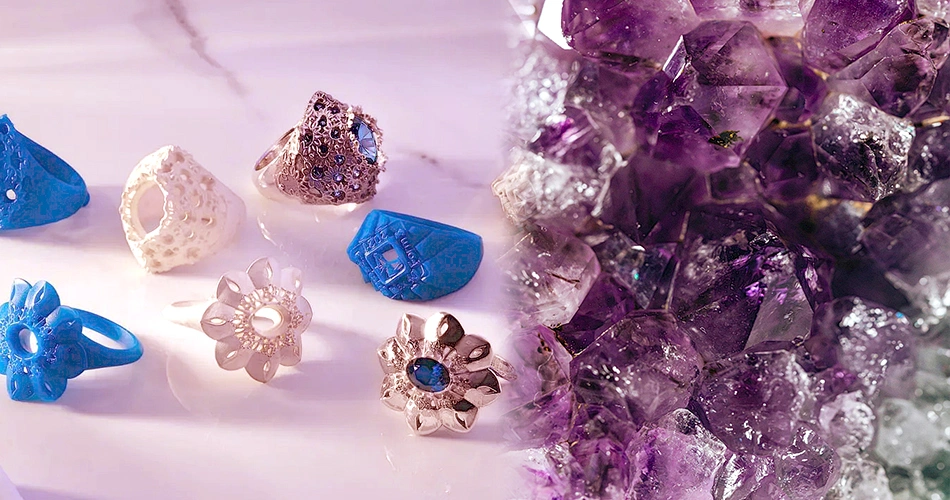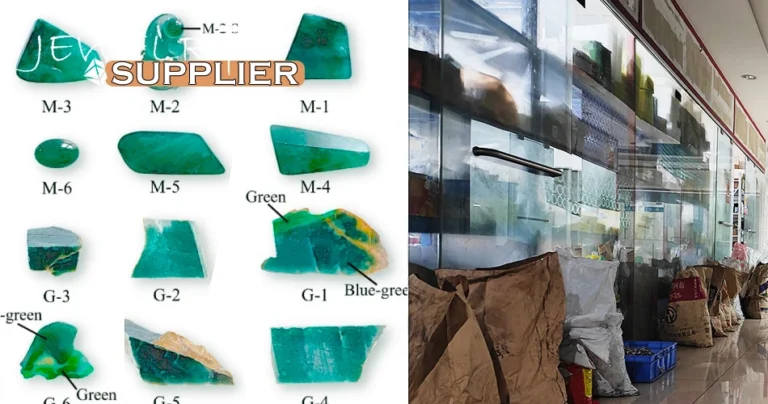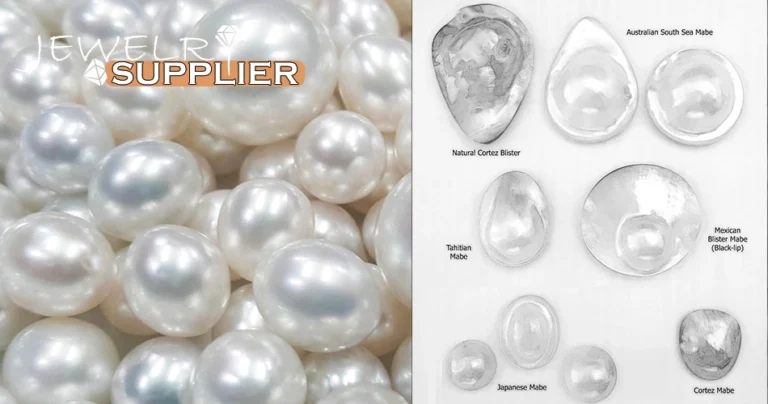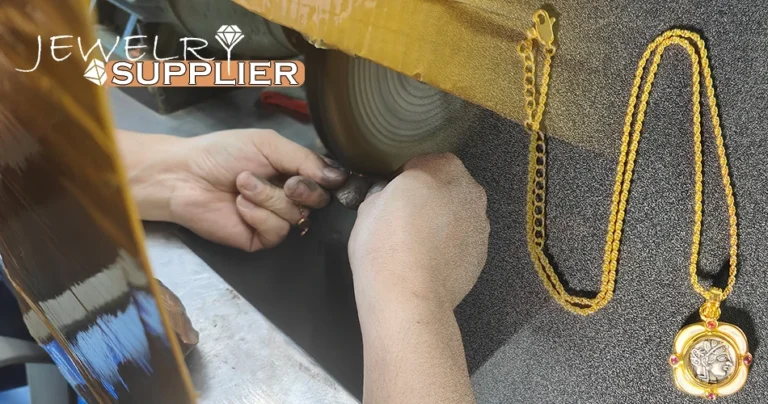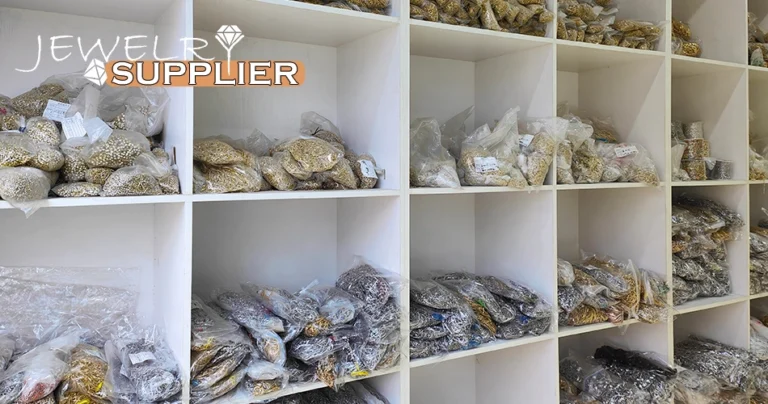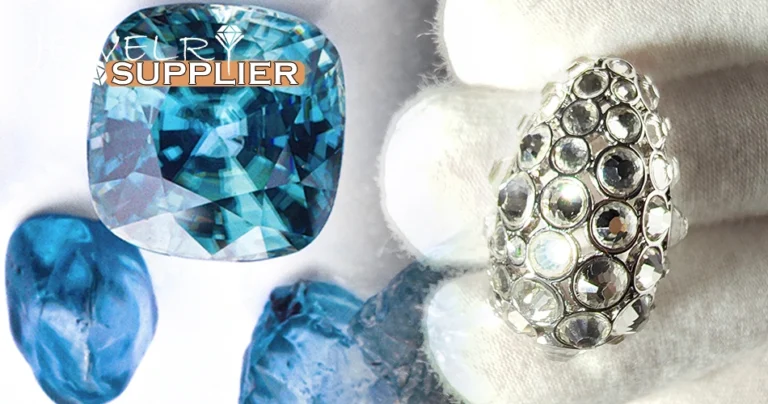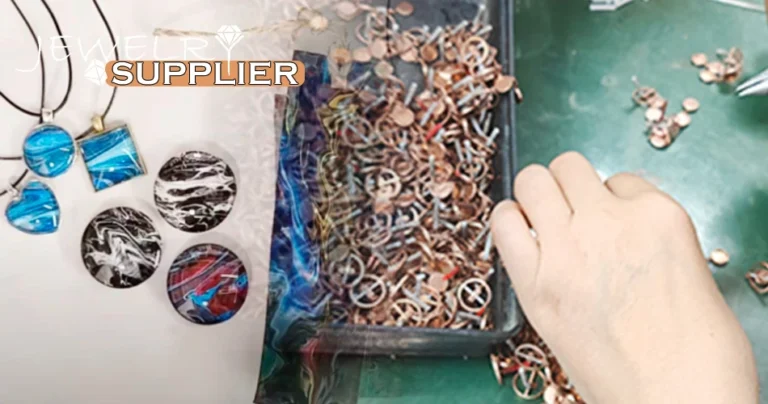Crystal Jewelry Processing Techniques
In the jewelry supplier, crystal pieces stand out for their unique charm and pure luster, representing fashion and elegance. The seamless connection from raw crystal materials to design and processing is crucial at every step. Designers skillfully combine creativity with client needs, capturing initial concepts through hand-drawn sketches and blending manual artistry with technology. This provides a visual experience for both designers and clients. During the production process, the pressing technique is key to shaping the initial form of crystal jewelry, determining its basic outline. Drilling and polishing processes give crystal jewelry its shine and smoothness, allowing for various wearing possibilities. Silk-screening and plating techniques add rich colors and patterns to crystal pieces, enhancing their individuality and artistic appeal. Carving and sandblasting techniques bring intricate textures and visual impact to crystal jewelry. Laser internal engraving technology perfectly marries modern science with ancient artistry, allowing delicate patterns to be etched inside the crystal, creating a mysterious visual effect.
Design Drawing Process:
The designer transforms ideas or client concepts into initial hand-drawn sketches, capturing the basic shapes, proportions, and detail features of the jewelry. The sketches are further refined to finalize the design scheme. CAD Modeling: Using computer-aided design software (such as JewelCAD, Rhino, etc.), the hand-drawn sketches are converted into 3D digital models. The CAD software is used to adjust the model’s proportions, dimensions, and other parameters to ensure the design’s accuracy and feasibility. Rendering software is employed to add materials and color effects to the model, generating realistic renderings that serve as effective references for clients and designers. For complex designs, 3D printing technology can be used to create wax molds for casting metal components. For more traditional or simple designs, a manual method can be used to create the initial model, such as using wax carving or metal sculpting. Under the skilled craftsmanship of jewelers, crystal jewelry can quickly take shape. Based on the initial model, crystal jewelry designers communicate with clients to review the draft and finalize the design version. Appropriate file formats (e.g., PDF, DXF) are output according to the production process requirements, preparing for the manufacturing phase.
Crystal: Nature’s Elegant Mineral
Material Selection for Crystal Jewelry:
Material selection during processing significantly impacts the appearance of crystal jewelry. Different types of crystals are believed to possess various effects. To facilitate client selection, our crystal manufacturers provide a list of crystal materials for clients to choose from, catering to unique demands for crystal jewelry.
| Material Name | Characteristics |
| Clear Quartz | Clear and transparent, believed to enhance intelligence and memory. |
| Amethyst | Enchanting purple color, symbolizing wisdom and spirituality. |
| Rose Quartz | Gentle pink hue, believed to promote relationships and love. |
| Citrine | Transparent crystal with golden needle-like inclusions, thought to attract wealth. |
| Garnet | Vivid red color, believed to enhance beauty and improve blood circulation. |
| Smoky Quartz | Brown or smoky color, thought to stabilize emotions and protect the body and mind. |
| Yellow Quartz | Bright yellow, believed to attract wealth and boost confidence. |
| Obsidian | Deep black, thought to eliminate negative energy and protect the wearer. |
| Strawberry Quartz | Transparent crystal with red dot or flake inclusions, believed to enhance popularity and attract romance. |
| Aquamarine | Light blue, thought to calm emotions and promote communication |
| Rainbow Spectrum Quartz | Transparent crystal with multiple rainbow spectrum colors, believed to balance body and mind. |
| Tourmaline | Various colors, including pink, blue, green, etc., believed to enhance energy and purify the environment. |
| Fluorite | Diverse colors, including green, purple, and blue, believed to relieve stress and promote clear thinking. |
| Tiger’s Eye | Golden yellow or brownish-red with a unique cat-eye effect, believed to enhance personal charm and courage. |
Pressing Process for Crystal Jewelry:
The pressing process is a key step in crystal production. This technique involves using molds to create the dimensions and shapes required for finished products. Specifically, raw crystal materials are heated to over 900°C until melted, then poured into pre-prepared molds to form the desired shape through pressure. This process requires precise temperature control and meticulous operation to ensure product quality. The pressing process is often used to produce semi-finished crystal jewelry items, such as crystal pendants and beads for bracelets.
Cutting: Specialized cutting equipment is used to cut selected crystal materials into sizes and shapes suitable for the pressing machine.
Preheating: The cut crystal materials are placed in a heating device for preheating. The purpose of preheating is to soften the crystal, making it easier to deform.
Pressing: The preheated crystal materials are placed into specially designed molds, which can be customized into various shapes, such as hearts, circles, or flowers. The pressing machine applies high pressure while maintaining a specific temperature, shaping the crystal material within the mold. Under the effects of pressure and temperature, the crystal material fills every corner of the mold, forming the desired shape. After pressing, the crystal material is removed from the mold and cooled. It’s essential to monitor temperature changes during cooling to avoid cracking the crystal.
Finishing: After cooling, the pressed crystal undergoes finishing to remove excess edges and blemishes, resulting in a smoother surface. The pressed crystal is polished to enhance its shine and luster, utilizing different grit wheels or sandpaper, followed by polishing agents. A quality check is performed to ensure there are no cracks or obvious defects. As needed, holes can be drilled into the finished pressed crystal and polished for subsequent assembly into complete jewelry pieces.
Drilling and Polishing Process for Crystal Jewelry:
In the production of crystal jewelry, the common practice is to drill holes before polishing. This approach is taken because drilling can leave fine scratches or uneven areas on the crystal surface, which polishing can eliminate in the final step, ensuring a smooth and shiny surface.
Manual Drilling: Suitable for smaller crystal pieces like pendants and earrings, offering flexible operation for personalized customization.
Electric Drilling: Used for mass production and larger crystal pieces. It is efficient with stable hole quality.
Laser Drilling: Used for precision drilling, especially for extremely small diameters. It offers high precision and speed, suitable for complex designs.
Ultrasonic Drilling: Used in situations requiring reduced heat and vibration, minimizing thermal effects and suitable for fragile materials.
Water Jet Drilling: Ideal for materials that are difficult to drill with conventional methods, as it doesn’t make contact with the material, perfect for complex shapes.
Mechanical Polishing: Involves specialized polishing equipment, suitable for mass production and larger crystal pieces.
Hand Polishing: Ideal for fine or small crystal jewelry, allowing better control over the polishing effect.
Silk-Screening and Plating Process for Crystal Jewelry:
Silk-screening and plating are two distinct surface treatment techniques for crystal jewelry, enhancing both aesthetics and artistic value. Silk-screening is ideal for adding fine patterns and text, offering flexibility for small batch or customized products, though it can be costlier. Plating provides long-lasting color and luster, requiring more complex equipment and technology, making it suitable for mass production at relatively lower costs.
Silk-Screening Process: Silk-screening, also known as screen printing, is an ancient printing technique that transfers patterns or text onto the surface of crystal jewelry through a silk screen. The process typically involves cleaning the surface of the crystal jewelry, then using a special silk-screen template to expose the patterned areas while covering the non-patterned sections. Special inks or pigments are pressed onto the crystal surface through the screen, forming the desired design. After silk-screening, the crystal jewelry often requires drying or curing to ensure the pattern’s durability and wear resistance.
Plating Process: In the crystal jewelry industry, plating, also known as electroplating or chemical plating, is a technique that adds a layer of colored film to the surface of the crystal. This process can enhance the crystal jewelry with various colors and luster, making it more vibrant. The plating process generally includes cleaning the crystal surface, then adding a layer of metal or metal oxide film through electrochemical methods. The resulting film can display a variety of colors, depending on the materials used and the process conditions. Plated crystal jewelry not only exhibits vibrant colors but also possesses good wear and corrosion resistance.
Carving and Sandblasting Processes for Crystal Jewelry:
While silk-screening and plating techniques differ greatly in technical details from carving and sandblasting processes, all these methods involve treating the crystal surface to achieve final effects. In some complex crystal jewelry designs, carving and sandblasting techniques may be used in combination to enhance the three-dimensionality and visual appeal of the patterns.
Carving Process: Carving is one of the most crucial and intricate techniques in crystal processing, allowing for the creation of beautiful patterns and designs on the crystal. This process can be categorized into manual carving and machine carving. Manual carving requires a skilled artisan with high artistry to intricately depict the desired pattern. Machine carving utilizes computer-aided design (CAD) and computer-aided manufacturing (CAM) technologies to precisely engrave pre-designed patterns with CNC machines. The carving process demands patience and skill to ensure the integrity and beauty of the crystal. Carved crystal jewelry typically features strong three-dimensionality and fine craftsmanship.
Sandblasting Process: Sandblasting involves shooting sand particles at high speeds onto the surface of the crystal to achieve a frosted effect. This technique imparts a matte or hazy texture to the crystal surface, adding layers and artistic effects to the jewelry. Sandblasting can be applied to the entire crystal surface or localized areas to create various visual effects.

